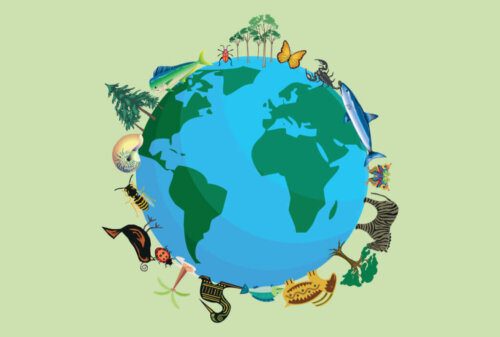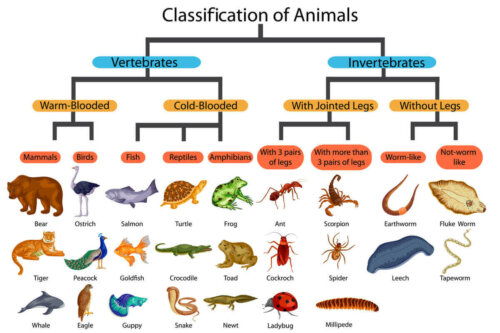How Many Animal Species Are There On the Planet?

The planet has great biodiversity; estimates indicate there are about 8.7 million species, 7.7 million of which are animal species.
There’s still a lot to discover and we only know a small fraction of the estimated animal species, the rest are yet to be cataloged. Unfortunately, some of them will eventually disappear before we know more about them.
How do you calculate the number of animal species?
Taxonomy is the science of classifying species (animal or non-animal) on the planet, it even includes extinct ones. This classification is based on the kinship between organisms and their evolutionary history.
In the 18th century, Linnaeus began a system for classifying animals and plants. In fact, he grouped them into categories from the largest (kingdom) to the smallest (species). This classification has been used to identify and group animal species. In addition, genetic advances contribute a lot to it.
It’s harder to add new discoveries as we move up in the taxonomic category. Actually, it’s more common to find new species or subspecies than new classes or families.

Researchers estimate the calculations of the species of a group through the number of higher taxonomic categories. This way, it’s possible to mathematically predict the number of species that a given genus or class can cover. This method is good for finding the exact number of species currently known.
In total, scientists think that, of the estimated 7.77 million animal species, more than 950,000 have already been cataloged. At the rate we’re making new discoveries, it would take about 1000 years to identify the approximately 8.7 million species on the planet.
The importance of biodiversity
Answering the question of how many species there are on the planet is a challenge. It shows there’s still much to learn about this world we live on; the importance lies not only in the number but also in the variety.
Biodiversity refers to the variability of living organisms on Earth and the ecological complexes they’re part of. For example, it includes diversity among species and the environment they inhabit. There are three levels of biodiversity and we must understand them in order to preserve species:
- Genetic diversity refers to the versions of genes that are present among individuals within a population and among populations of the same species.
- Species diversity includes living beings with common characteristics at the species level, and minor categories, such as subspecies, and higher ones, such as genera or families.
- The diversity of spaces represents the various ecosystems that make the existence of the species possible. It refers to all the physical, chemical, and biological environments that make up the environment.
The biodiversity present on Earth is the result of 4 billion years of evolution. In fact, its maintenance is fundamental to the conservation of animal species. Unfortunately, the pace of resource consumption and the invasion of ecosystems by humans have damaged this ancestral biological balance.
Insects are the most abundant animal species on the planet
Insects are the most diverse group of animals on the planet and the most widespread. There are over a million identified species and these represent about 90% of animal species. However, we don’t fully know the actual numbers. Still, estimates indicate there are several million more than those documented so far.
What’s the secret of their success, though? Thanks to the process of evolution these animals have many advantageous morphological and physiological characteristics such as:
- Small size
- Light and resistant exoskeleton
- Insects are the only invertebrates with wings and it allows them to increase their expansion capacity
- Metamorphosis allows specimens of the same species and of different ages to live together without competing for the resources of their environment
- The ability to leave behind a large number of offspring that doesn’t require parental care

An endangered diversity
Finally, the taxonomic classification has been around for about 250 years. Also, there are over 1.2 million species in a central database. However, we’re yet to discover and learn about 86% of the species on Earth and 91% of the species in the ocean.
Unfortunately, at this rate, many species will extinguish before we even know about them. This is because we continue to destroy their natural habitats. Therefore, the current trends show no indication of it stopping any time soon.
All cited sources were thoroughly reviewed by our team to ensure their quality, reliability, currency, and validity. The bibliography of this article was considered reliable and of academic or scientific accuracy.
- Mora C, Tittensor DP, Adl S, Simpson AGB, Worm B (2011) How Many Species Are There on Earth and in the Ocean? PLoS Biol 9(8): e1001127.
- Fundación Biodiversidad.
- La metamorfosis de los insectos. Xavier Bellés
- Ceccarelli, E. (2017). Cortejo animal.